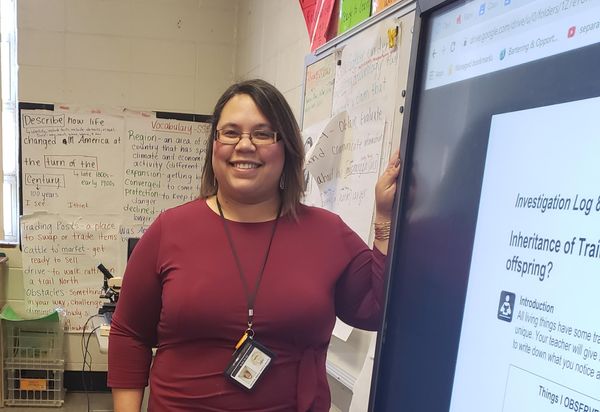- Name: Juliet Walls
- District: Clayton County
- Grade/Subject: 5th Grade Science and Social Studies
- Twitter Handle: @juliet_walls
Q: How and when did you learn about ADI?
Summer of 2018 district provided summer conference training. I was looking for a workshop that was interactive and that I could bring back to my classroom. I attended that week-long Introduction to ADI training. As teachers, we did the labs. We went through chemical properties and inherited traits. I am a hands-on person so I was really excited to be in the shoes of the students and I saw how I could differentiate as I brought it back to my classroom. I enjoyed it so much I didn’t even feel like I was having to get up and go to work.
Q: What do you like most about ADI?
The thing I love the most about ADI is the flexibility and the ability to reach students of all levels. When I took the course, I was worried about my students with disabilities and my ESOL students. The course really made me think about how I can reach my students. The discussions with the instructor made me really think about how to help these students. Also, students are more engaged in ADI because the investigation is in their hands. ADI pushes them to develop higher order thinking skills; traditional labs don’t do that.
Q: What positive shifts have you seen in your own practice and with kids?
One of the more positive aspects of myself is being able to release the information and control to students and what differentiation really means. I grew up in an era where everyone did the same thing. ADI made me reflect on how I can reach each of my students. ADI also encouraged me to plan ahead - you can’t do ADI if you start planning at 8 am. So, I have to plan ahead and that has given me time to think ahead and really plan for differentiation.
Students are more willing to complete the written report. They get excited to pull the data they collected and it enables them to take ownership, so they are more willing to dig in and they are more willing to make mistakes. That is how they really learn, especially in science. They learn from their mistakes and it brings about more guiding questions. This also really helps with the 3D instruction we have to do as part of our standards.
Q: How many ADI do you do in a year?
We do four ADIs every year, two per semester. We align them to our units based on our curriculum map. We do Identification of the Unknown, Inheritance of Traits, Movement of Water, and States of Matter of Weight in 5th grade.
Q: What did you find challenging when using ADI at first and how were you able to overcome that challenge?
The written reports because writing is naturally difficult. The only way to improve at writing is practice and it is a difficult concept to teach. To have students take the data they collected and the graphs they created; it was difficult to teach them how to transfer that into the written report. ADI provides the sentence frames which helps but it is still difficult. But, the report enables them to make sense of what they have learned. The other challenge is time as it can take 8-10 days to complete a lab, so timing is a challenge to make sure we could complete every stage of ADI and still stay on pace.
Q: What advice do you have for other teachers as they are starting out?
Don’t be scared. I suggest teachers not take what your district gives you but look at ADI on Twitter and Facebook and see what other teachers are doing. Don’t be afraid to do the ADI on your own before your district requires it.

